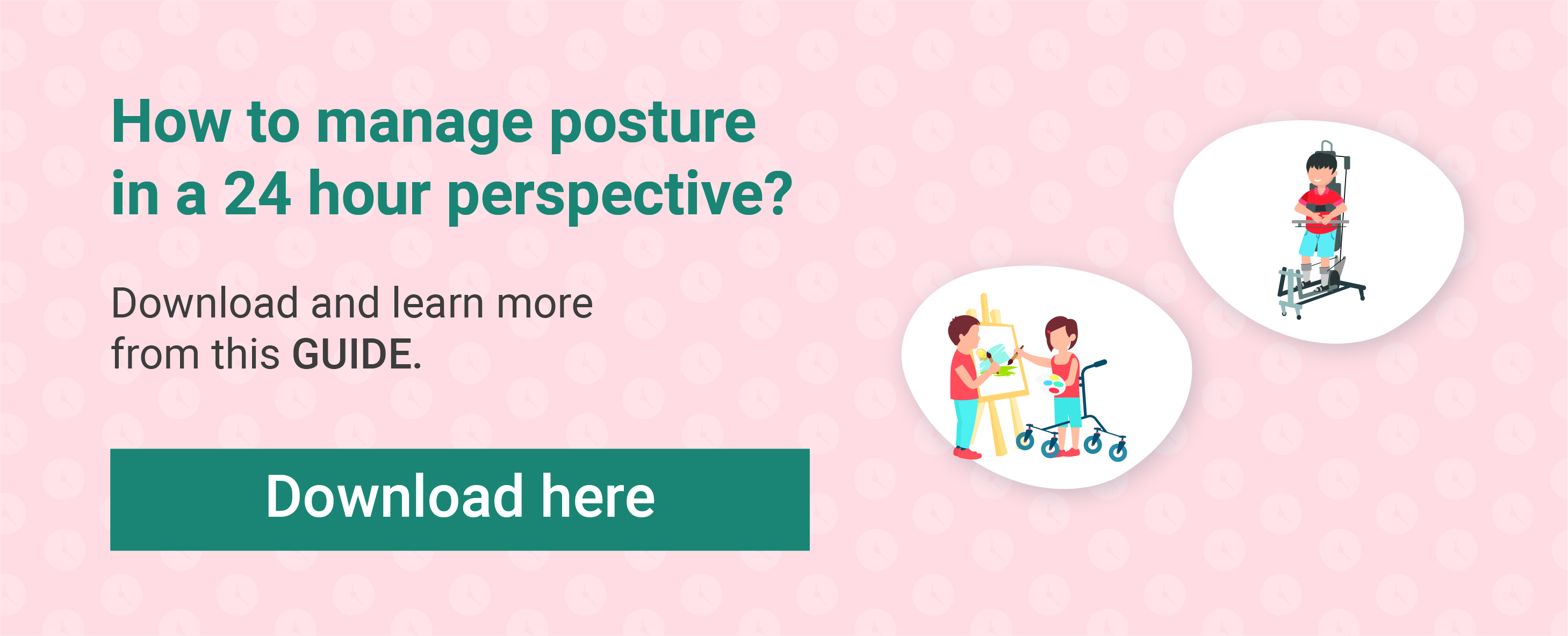New study: Activity in the Innowalk improves quality of life (QoL)


A recently published study shows that dynamic standing in the Innowalk significantly improves the quality of life for children with severe CP. The assistive device made it possible for children, who spend most of their time sitting or lying, to be active in an upright position with weight bearing.
Physical inactivity can have serious implications for children’s health
Non-ambulatory children with cerebral palsy spend most of their time sedentary and are less physically active compared to able-bodied children. Their diagnosis is often accompanied by pain, epilepsy, scoliosis and contractures. At the same time we know that a sedentary lifestyle is a leading cause of many diseases. Hence, it is crucial that these children get access to physical activity to improve or maintain functions and a healthy life.
Since functional limitations restrain participation in physical activity, assistive devices can enable exercise and training for children who cannot stand and walk independently.
In many countries, static standing is part of standard care for non-ambulatory children. While standing frames may benefit some children, it is an inconvenient intervention for others. A Swedish research team at the Lund University has compared static standing with dynamic standing and the effects the two interventions have on quality of life.
Their study was recently published in the peer reviewed journal Disabilities from MDPI.
In this blog article we give you a summary of their findings.
Health-related Quality of life
Quality of life is considered to be multidimensional and includes the person’s perceived physical and mental health. For children with CP pain, gross motor abilities, bowel function, mental health and physical activity have shown to impact their health-related quality of life.
The research team wanted to explore the effects of dynamic standing with walking movement on quality of life, and compare it with standard care which in this case was static standing. This was the first time someone ever studied these parameters.
/Ada_IW_Feature-Image.jpg?width=1200&name=Ada_IW_Feature-Image.jpg)
What the research tells us
To find out what effect the use of Innowalk has on quality of life, the research team included 24 children in the research. Four dropped out due to illness or surgery, so a total of 20 children completed the study. They were between 5 and 17 years old, having either bilateral spastic or dyskinetic CP, GMSCS level IV and V, which means a severe condition.
The study was performed as a randomized controlled study with a cross-over design. A cross-over design was used due to the large individual differences in the population in this study, where each individual was their own control.
Each child performed four months of static standing in a standing frame and four months of dynamic standing in the Innowalk. There was a wash-out period of at least two weeks between the two interventions. The exercise as well as all the assessments were done in their own preferred environment, weather it was at home or at school.
Methods used to assess health related quality of life were a combination of the validated and reliable Scandinavian version of the Caregiver Priorities and Child Health Index of Life with Disabilities (CPCHILD) and a study-specific questionnaires.
The CPCHILD is tailored to children with CP and consists of six different sections and 37 items in total. The different domains are: (1) Activities of Daily Living/Personal Care (9 items), (2) Positioning, Transferring, and Mobility (8 items), (3) Comfort and Emotions (9 items), (4) Communication and Social Interaction (7 items), (5) Health (3 items), and (6) Quality of Life (1 item).
The study-specific questionnaire was designed to evaluate the following additional parameters:
- bowel function
- pain
- satisfaction
- alertness
- medication
- fatigability
- ability to focus
No statistically significant change in quality of life after static standing
However, a statistically significant difference in quality of life was seen when comparing static standing with dynamic standing.
Dynamic standing was better than static standing in all outcomes except alertness
Results after the exercise periods revealed that there was a clinically relevant increase in quality of life after dynamic standing. All but one outcome were better after dynamic standing compared to static standing.
Six factors improving quality of life after dynamic standing
- Satisfaction
- Fatigability
- Ability to focus
- Bowel function
- Medication
- Pain
Conclusion
Dynamic standing using the Innowalk was the preferred alternative from the family perspective, as it had greater benefits than the standard care of static standing.
For more information about this study, read the full article published in the journal Disabilities here.

The author worked as Head of Marketing for Made for Movement for 7 years before she pursued other adventures in her own company. Trine Roald has over 20 years of international experience within a variety of industries. As Head of Marketing for Made for Movement she was passionate about communicating stories and know-how featuring possibilities for improving the quality of life among people with severe disabilities.
A severe accident during a hockey game resulted in 35-year-old Tobias breaking his neck and becoming paralysed from the armpits down....
A disability entails the loss of, damage to, or deviation from bodily or psychological functions, in the form of mental, physical,...
The Neurological Interdisciplinary Treatment Centre NiB (Neurologisches Interdisziplinäres Behandlungszentrum) is an innovative...
Hear from us from time to time and learn new things
